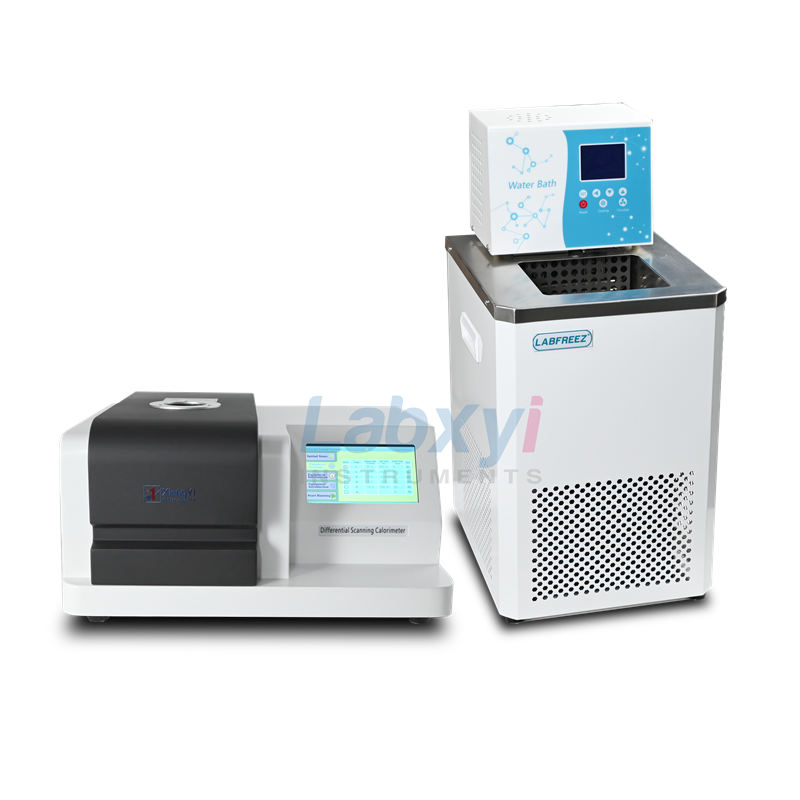1. Basic principles of DSC
DSC is a technique that measures the heat released or absorbed by a material under controlled temperature. By comparing the temperature difference between a sample and a reference under the same conditions, the change in heat flow of the sample can be obtained. DSC can provide thermodynamic information about material phase change, glass transition, crystallization and thermal decomposition, which is of great significance for the research and development and optimization of battery materials.

2. Application of DSC in battery material research
- Phase transition and thermal behavior of electrode materials
The phase change behavior of electrode materials affects the performance and life of the battery. DSC can be used to study the phase change of positive and negative electrode materials during the charge and discharge process. For example, lithium iron phosphate (LiFePO4) undergoes phase change during the charge and discharge process, and DSC can detect the temperature range and thermal effect of this phase change. In addition, DSC can also be used to evaluate the thermal stability of electrode materials to ensure that they will not undergo adverse thermal reactions within the operating temperature range.
- Use differential scanning calorimetry (DSC) to test the phase change process of lithium iron phosphate (LiFePO₄).
2.1. Sample preparation
Sampling: Take a small amount of lithium iron phosphate powder (a few milligrams).
Sample preparation: Distribute the sample evenly in the DSC sample pan, ensuring good contact between the sample and the sample pan.
2.2. Instrument calibration
Temperature calibration: Use standard samples (such as indium, tin) for temperature calibration.
Heat flow calibration: Ensure that the heat flow sensor of the DSC instrument is working properly and perform necessary calibration.
2.3. Setting test parameters
Heating rate: Common heating rates are 5°C/min to 10°C/min. Slower heating rates provide higher resolution but increase test time.
Temperature range: Typically from room temperature to 400°C or higher, with the specific temperature range set based on the known phase transition temperature of lithium iron phosphate.
2.4. Testing process
Start the test: Start the DSC instrument and record the heat flow changes of the sample during the heating process.
Data Acquisition: The DSC instrument will record the changes in heat flow of the sample over the entire temperature range and generate a heat flow temperature curve.
Data analysis
Curve analysis: Analyze the endothermic and exothermic peaks on the heat flow temperature curve. These peaks correspond to phase change processes.
Determine the phase transition temperature: Determine the onset temperature and peak temperature of the phase transition from the curve.
2.6. Test results analysis
.jpg)
It can be seen from the DSC diagram that the LiFePO4 material reacts with the electrolyte to produce an exothermic reaction, the reaction temperature is relatively concentrated, the exothermic peak temperature is at 230°C, and the positive electrode material has a higher initial reaction temperature, showing better thermal stability.
- Notes
Sample Purity: Ensure that the sample is of high purity to obtain accurate test results.
Ambient atmosphere: Select appropriate test atmosphere (such as air, nitrogen) as needed to avoid sample oxidation or other chemical reactions.
3. Application of DSC in battery safety assessment
- Thermal runaway behavior study
Batteries may experience thermal runaway when they are overcharged, over-discharged, or physically damaged, leading to serious safety accidents. DSC can simulate the thermal behavior of battery materials under extreme conditions and help predict the risk of thermal runaway of batteries. For example, through DSC testing, we can understand the decomposition reaction of electrolytes at high temperatures and their interaction with electrode materials, thereby evaluating the safety of batteries under extreme conditions.
- Fire risk assessment
During use, batteries may catch fire due to internal short circuits or external fire sources. DSC can be used to measure the heat release of battery materials at high temperatures and assess their fire risk. For example, by analyzing the thermal decomposition behavior of the electrolyte and electrode materials of lithium-ion batteries at different temperatures through DSC, we can understand their combustion characteristics in fire and formulate corresponding fire prevention measures.
4. Conclusion
As an important thermal analysis tool, DSC plays an important role in the research and development of battery materials and battery safety assessment. Through DSC testing, we can gain a deep understanding of the thermal properties and phase change behavior of battery materials, help optimize battery design, and improve its performance and safety. With the continuous development of battery technology, DSC will play an increasingly important role in the battery industry and provide strong support for future battery innovation.
